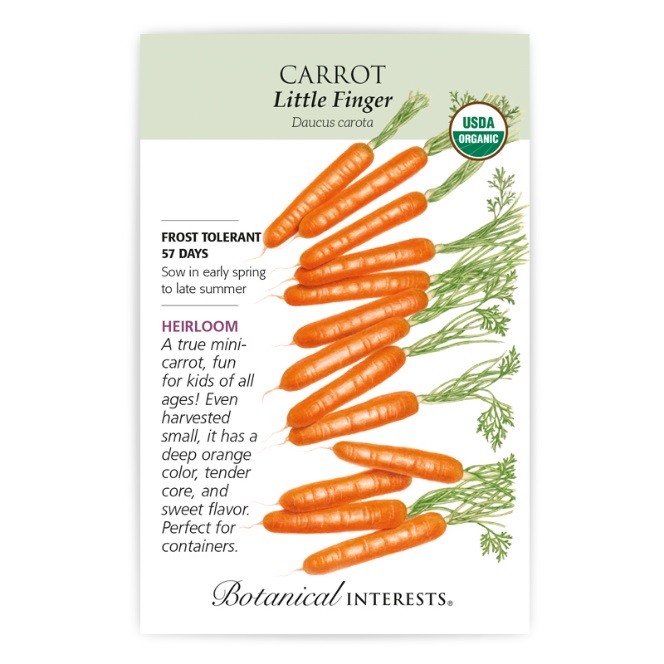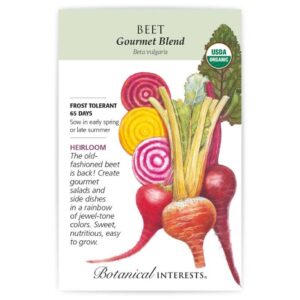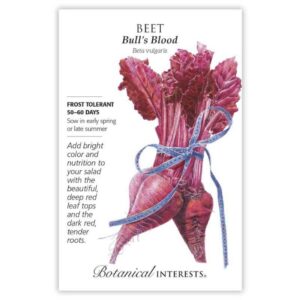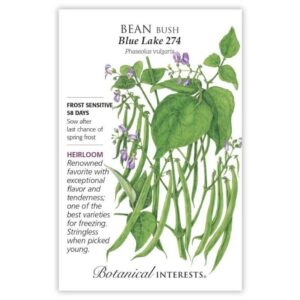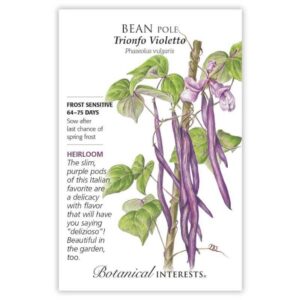Description
'Little Finger' carrots are a delightful treat for gardeners who crave sweet, crisp baby carrots straight from the garden. Unlike grocery store baby carrots that are cut from larger roots, 'Little Finger' grows as a true 3″ baby carrot with smooth, cylindrical roots and a rich orange color, even before reaching maturity. Developed in France for pickling and canning, these Nantes-type carrots are perfect for adding to fresh salads or preserving for later use. At their peak, they are just 3″ long but can grow to 7″ if left to mature.
This packet sows up to 42 feet. 510 seeds.
Variety Info:
Botanical Name: Daucus carota
Days to Maturity: 57 days
Family: Apiaceae
Native: Africa, Eurasia
Hardiness: Frost-tolerant biennial grown as an annual
Plant Dimensions: Roots are 3″ long at their peak
Variety Information: Smooth, cylindrical, uniform, with deep orange color even before maturity. Will grow to 7″ if allowed. 'Little Finger' is a Nantes type carrot.
Sowing Info:
When to Sow Outside: RECOMMENDED. 2 to 4 weeks before your average last frost date, and when soil temperature is at least 45°F, ideally 60°–85°F. Successive Sowings: Every 3 weeks until 10 to 12 weeks before your average first fall frost date. In very warm climates, carrots are grown primarily in fall, winter, and spring.
When to Start Inside: Not recommended; root disturbance stunts growth.
Days to Emerge: 10–25 days
Seed Depth: ¼”
Seed Spacing: 1″
Row Spacing: 6″
Thinning: When 1″ tall, thin to 1 every 2″
Growing Info:
Harvesting: For best flavor and texture, harvest carrots any time before, and until they reach their optimal size. Peak harvest period lasts about 3 weeks, longer in the fall. Late summer-sown carrots are sweetened after having been kissed by light frost; however, harvest before soil freezes, which may destroy the crop. In USDA zone 5 or warmer, carrots can be left in the ground for storage provided they are heavily mulched; harvest as needed on days the ground is not frozen.
